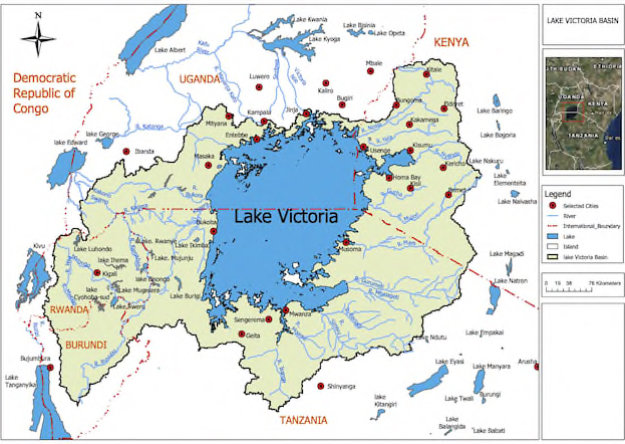Background
Lake Victoria
Lake Victoria is situated in East Africa. It is shared among 3 countries: Tanzania, Uganda and Kenya and is the world's second largest freshwater lake with a dimension of approximately 69,000 km2 (Awange, 2021).
The Lake Victoria fishery is estimated to have a total annual economic contribution of €710 million and more than a third of this (€250 million) is from the export of a single species, the Nile perch (LVFO, 2016).
Lake Victoria's riparian population has grown dramatically in the last 40 years and the Lake Victoria fishery is estimated to support, directly and indirectly, the livelihoods and protein availability for around 4 million people (Mkumbo & Marshall, 2015).
This includes a direct source of income for approx. 250,000 fishers operating over 77,000 boats.
A Historical Look: The Nile Perch and Dagaa Fisheries
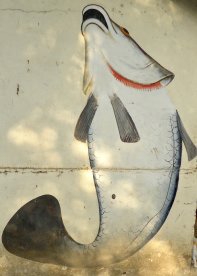
The Nile perch (Lates niloticus) is a species of freshwater fish that is non-native to Lake Victoria. It can grow up to 2 meters long (around 200 kg) and is a fierce predator that feeds on smaller fish species and shrimp. Before the introduction of the Nile perch, Lake Victoria's ecosystem was dominated by over 500 different native species. However, these species had a relatively low protein content and economic value. The Nile perch was introduced in the early 1950s and 1960s by British colonials as an effort to increase the economic productivity of the lake (Pringle, 2005).
A combination of over-fishing and the introduction of this fierce predator lead to an ecological tipping point (Pringle, 2005). Now, only three fish species dominate Lake Victoria’s ecosystem: the Nile perch, the Nile tilapia (Oreochromis niloticus) and the native Dagaa (Rastrineobola argentea). The Nile perch has the highest nutritional and commercial value of all three species. From the 1990s onwards, the fishing industry rapidly expanded and pressure on the Nile perch stock continued to increase (Odada et al., 2004; Matsuishi et al., 2006). This pressure is prevalent today (Mkumbo & Marshall, 2015) and when over-exploited, the collapse of this important fishery will have significant socio-economic consequences.
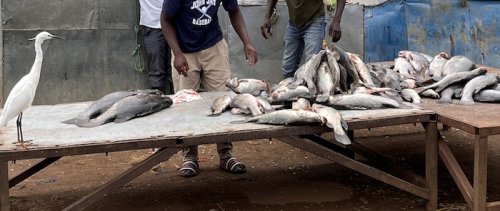
The Silver Cyprinid, also called Lake Victoria sardine, mukene, omena (in native language), or dagaa in Swahili, is a freshwater fish found in East Africa. The dagaa fishery is the largest fishery by catch volume and the second largest fishery by economic value at Lake Victoria (Kolding et al., 2014). It provides a livelihood to thousands of fishermen and their families and is an essential part of food security for several million residents around Lake Victoria.
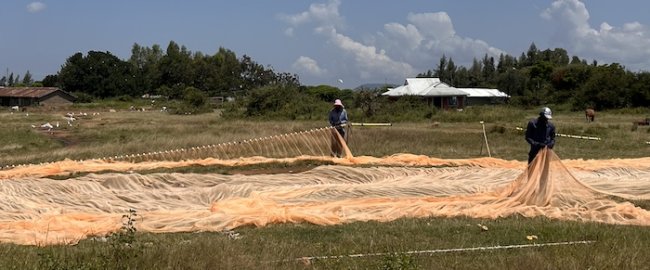
To catch dagaa, fishermen use the seine netting method where three or four large net panels are vertically connected to form a larger net used (ca. 100 meter long and 15 meter deep) to catch schools of dagaa that are lured to the surface by kerosene lamps at night.
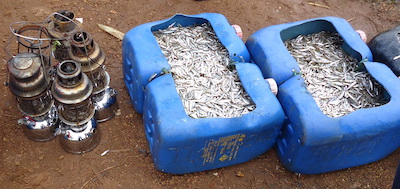
Regionally and Globally Connected
Not only is the lake’s Socio-Ecologocial System (SES) important for the local riparian population, it also has a regional and global significance and these connections affect both the fishery and the riparian economy. Regionally, Lake Victoria is a focal point of conflict between the three countries over rights to access and over governance. Complex demographic dynamics, such as migratory patterns from distant wars, inter-ethnic strife and climate change, add to local population growth.
Dagaa is an important source of protein and therefore, vital for food security in the Lake Victoria region.
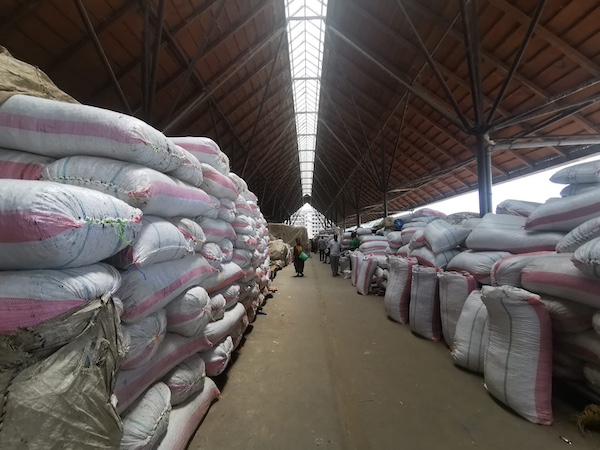
Nile perch is sold in the international market which generates vital foreign currency earnings, but also serves as a conduit for global events to affect Lake Victoria’s SES.
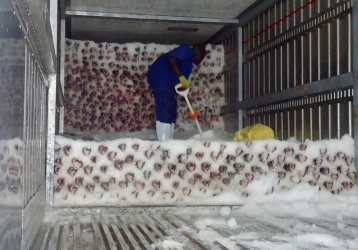
Management and Conservation
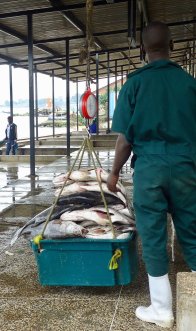
The Lake Victoria Nile perch fishery is a de facto open access fishery due to the sheer size of the lake and the size of the fishery with over 77,000 boats (Hamilton, 2016). Furthermore, the fisher communities are dispersed around the lake and the political economy does not allow for heavy entry regulation (Nunan, 2020). These factors make traditional management instruments, such as fishing quotas or a cap on the number of boats, difficult to impose.
Nevertheless, policy-makers in Uganda, Kenya, and Tanzania do recognise the importance of protecting the juvenile fish stock to improve resilience of the fishery. Much of the existing regulation relies on defining legal outcomes, i.e. legal size range of catchable fish (50 – 84 cm), and by defining legal inputs, i.e. minimum size specification for longline hooks and gillnets’ mesh (LVFO, 2016b). MultiTip aims to assess current instruments and new ones that could be used to address sustainable management of the fishery and we use our findings to provide policy advice.
To read about our findings, click here.
To read about policy insights and implications, click here.
References:
Awange, J. (2021) Lake Victoria Monitored from Space. Springer International Publishing. doi:10.1007/978-3-030-60551-3.
Hamilton, S. (2016). Shoreline, Lake Victoria, vector line, 2015.
LVFO. (2016a). Regional status report on Lake Victoria biennial frame surveys between 2000 and 2016. Kenya, Tanzania and Uganda. Jinja, Uganda.
LVFO (2016b). Fisheries management plan III for Lake Victoria fisheries 2016-2020.
Matsuishi, T., Muhoozi, L., Mkumbo, O., Budeba, Y., Njiru, M., Asila, A., ... Cowx, I. G. (2006). Are the exploitation pressures on the Nile perch sheries resources of Lake Victoria a cause for concern? Fisheries Management and Ecology, 13, 53–71. doi:10.1111/j.1365-2400.2006.00477.x.
Mkumbo, OC, & Marshall, BE (2015). The Nile perch fishery of Lake Victoria: Current status and management challenges. Fisheries Management and Ecology, 22(1), 56-63. doi:10.1111/fme.12084.
Nunan F (2020). The political economy of fisheries co-management: Challenging the potential for success on lake Victoria. Global Environmental Change, 63:102101.
Odada EO, Olago DO, Kulindwa K, Ntiba M, & Wandiga S (2004). Mitigation of environmental problems in Lake Victoria, East Africa: causal chain and policy options analyses. Ambio, 33(1), 13-23. doi:10.1579/0044-7447-33.1.13.
Pringle, RM (2005) The Nile Perch in Lake Victoria: Local Responses and Adaptations. Africa, 75(4), 510-538. doi:10.3366/afr.2005.75.4.510
Webpage Editor:
E-Mail
Updated on:
02.04.2024



